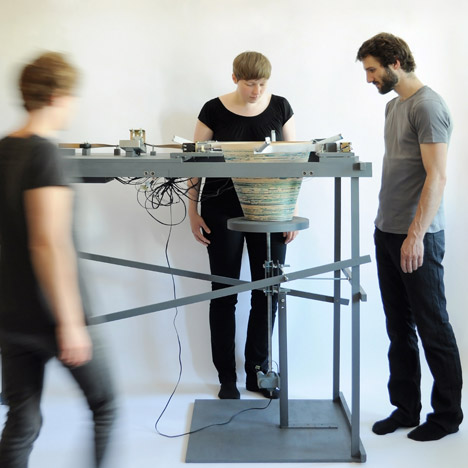
Collective Works by Mischer'Traxler
Clerkenwell Design Week 2012: Vienna designers Mischer'Traxler present a basket-making machine that stops working when nobody's looking at Clerkenwell Design Week in London this week.
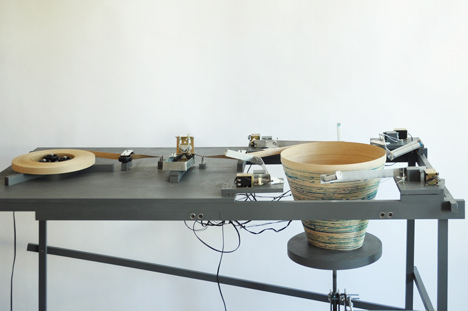
When sensors in the framework detect the presence of one person, a strip of oak veneer is drawn through a basin of glue and wound round into a basket.
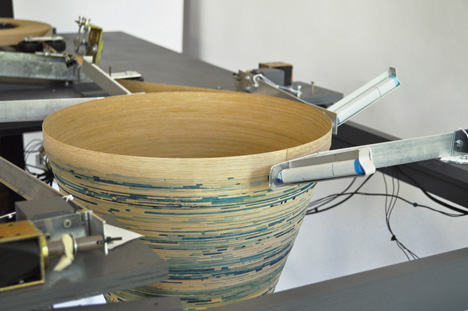
If a second person is detected, colour will be applied to the veneer by a marker pen.
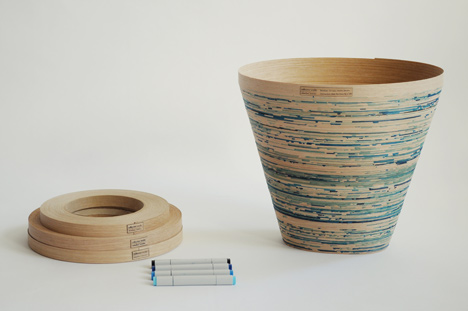
More spectators cause it to add more colour, so the resulting object becomes a record of how much interest was generated at different times during its production.
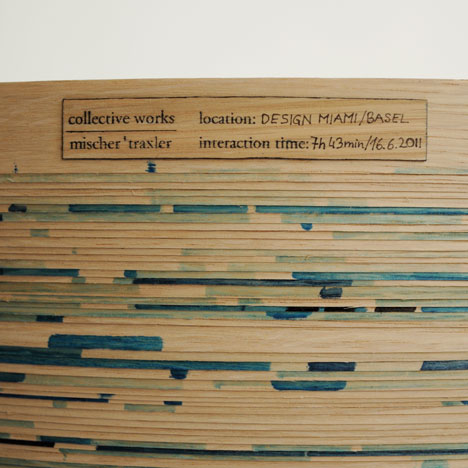
Called Collective Works, the machine only works while it holds the attention of its audience and if spectators completely lose interest, the piece will never be completed.
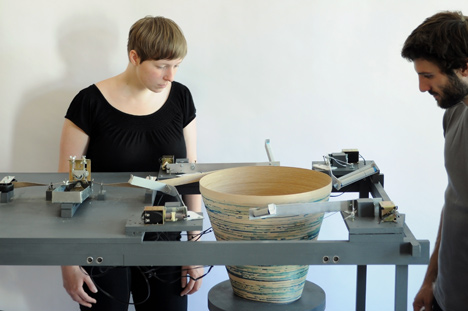
The project was initially developed for the W-hotels designer of the Future award exhibition at Design Miami/Basel 2011 - see our earlier story.
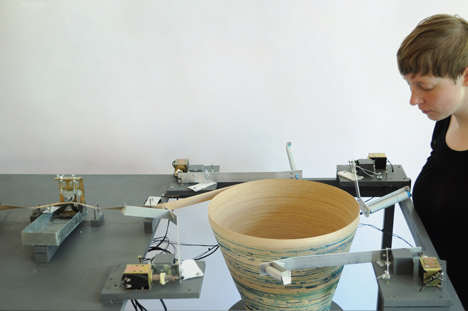
Clerkenwell Design Week takes place from 22-24 May and includes our latest Dezeen Watch Store pop-up at the main venue at the Farmiloe Building, 34 St John Street until 9pm tonight - more details here.
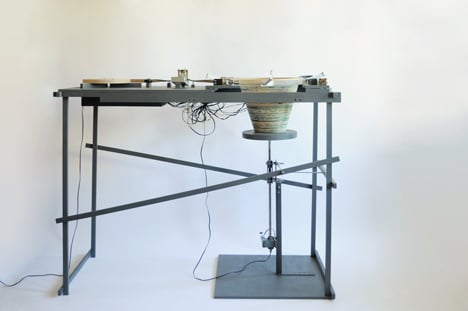
See all our stories about Mischer'Traxler »
See all our stories about Clerkenwell Design Week 2012 »
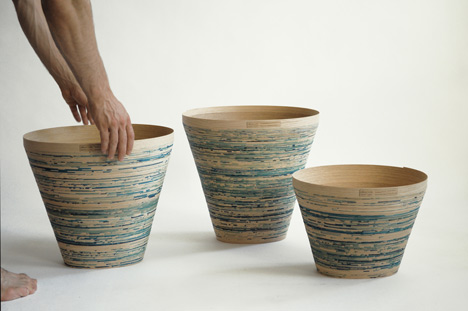
Here's some more information from the designers:
‘Collective works’ is a production process which is just fully functioning when people pay attention to the producing machine. Reacting to its audience, the process translates the flow of people into an object. The resulting outcome varies in colour and size just like the level of interest is varying during the time of production.
As soon as one person is coming close and looks at the machine, the production process is started: A wooden 24mm wide veneer-strip is pulled through a glue basin and slowly coiled up around a 20mm thick wooden base. Since the turning platform with the base moves downwards the veneer strip slowly builds up a basket. A mould is not needed since the material supports itself and does not collapse when being coiled up. As soon as somebody else joins to look at the process, colour is added via a marker onto the veneer.
The interaction is possible due to sensors in the frame of the machine. If one sensor is activated/one person is watching, the machine starts winding. When two are activated, the marker with a light tone colour is pressed to the veneer to colour it. The third person results in one more marker with a gradiently darker colour. This goes up to four markers at the same time staining the veneer-strip black.
Depending on the overall interaction time the baskets' height is defined. The more often somebody stops by to watch the process the higher the outcome gets.
The machine directly reacts to each observer and thus the outcome is as well directly depending on the audience. Every spectator leaves a mark on the object and therefore each basket becomes an unique record of the people's interest in the object's production. A basket – a vessel used to collect something, becomes a collection of data by itself. If nobody is interested in the project, it stops producing at all and the final object just does not get made. This can be seen as 'production on interest'.
'Collective works' also questions the relation between man and machine. The audience is turned into workers even though their effort is basically just their time they spend with the machine - but time is what most of us lack. Somehow. Normally many machines in factories just need some technician to monitor the production and suddenly one machine needs some audience to produce colourful outcomes.